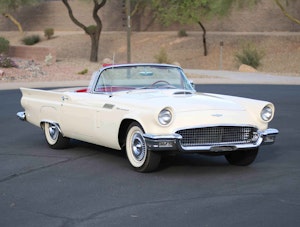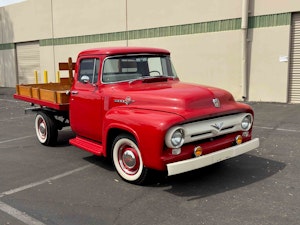Media | Articles
With a hand from Australia, Ford brings the Ranger back to America
There was a time—specifically four years ago when General Motors introduced a new generation of mid-size Chevy Colorado and GMC Canyon pickups—when the people at Ford insisted they didn’t need a mid-size pickup. The F-150, with its many variants, covers the pickup needs of all buyers, they claimed. There’s no market for mid-size pickups, they claimed. At least no market in which we can make money.
Today, the people at Ford are singing a different tune, having watched the Colorado and Canyon find many buyers and add many dollars to GM’s coffers. The success of the latest Toyota Tacoma surely got their attention, also. So, at this week’s North American International Auto Show in Detroit, Ford unveiled the 2019 Ranger, which goes into production at a suburban-Detroit plant at the end of this year. If you don’t care about mid-size pickup trucks, you might care that the Ranger will, in 2020, also spawn a modern Bronco. Cue applause.
The Ranger disappeared from Ford’s U.S. lineup years ago but is still sold in many other markets. That truck, originally designed at Ford’s Australia studios, forms the basis for the upcoming North American edition, which gets a fully boxed ladder frame with six crossmembers; a new powertrain; and a suite of available off-road equipment. For us Yanks, Ford is understandably positioning the Ranger as the little brother of the F-150 and, in fact, claims it subjected the Ranger to the same durability testing as the F-series.
20180115184746)
20180115183720)
Marketplace
Buy and sell classics with confidence
20180115183048)
20190115154343)
The Ranger’s design chief, Max Wolff, is a Detroit-based Aussie who’s a veteran of Holden (GM Australia), Cadillac, and Lincoln studios. He and his Ford design team wrapped the Ranger in natty new sheet metal featuring an aluminum hood with dual power bulges, muscular wheel arches, and big, bold letters spelling RANGER stamped into the tailgate.
“You need some visual strength in a hood,” Wolff says, admitting that the bulges are for looks, not to accommodate some beastly big engine underneath. He also points out the wide, frame-mounted steel bumpers and the more steeply raked windshield as signature elements that give the new Ranger a strong stance. One of the launch colors, Saber Orange, is new for North America. “We have some history with this family of color,” Wolff notes, “with the Ranger Wildtrak sold in Australia.” Down under, it’s called Pride Orange. Whatever, it’s a nice break from black, gray, and blue.
The sole engine at launch, a 2.3-liter EcoBoost (turbocharged and direct-injected) four-cylinder, will be paired with Ford’s new 10-speed automatic transmission that was co-developed with GM. The 2.3L EcoBoost in the Ford Mustang makes 310 horsepower and 350 lb-ft of torque, and Ford promises that, in the Ranger, it will deliver best-in-class torque. The Chevy Colorado has 308 lb-ft from its 3.6-liter V-6 and 369 lb-ft from its 2.8-liter turbo-diesel, so we’d guess the Ranger will produce about 375 lb-ft. Beastly. Ford has previously mentioned their plans to sell 40 hybrid or electric models by 2020, so expect Ranger to follow suit with a hybrid powertrain in the coming years.
20180115184728)
20180115183034)
20180115183103)
Remember the bare-bones, regular-cab Ranger? You still see tired but honest examples on the road today, but you won’t see anything like them in 2019. Like most pickups, the new Ranger will start with an extended cab, called SuperCab, and there will also be a SuperCrew with four full-size doors. And like most modern trucks the Ranger will have a cabin that’s as luxurious and well equipped as anything in a comparably priced car, especially in top Lariat trim.
Ford says that full-size truck owners use their trucks for work, whereas people buy mid-size trucks for fun, especially the off-road variety. The Terrain Management System in the optional FX4 off-road package is inspired by the one in the F-150 Raptor and includes four drive modes: normal; grass, gravel, and snow; mud and ruts; and sand. Ford also introduces an off-road form of cruise control called Trail Control that maintains a very low speed to allow drivers to concentrate on steering. Both systems are similar to existing setups in the Toyota Tacoma. The FX4 also gets off-road shocks, a steel front bash plate mounted to the frame, skid plates, and all-terrain tires. Approach and departure angles, we’re told, will be “very competitive.”
So, Ford isn’t blazing new ground here, but the Ranger looks like it will be a worthy little brother to the F-150, and its off-roading hardware bodes well for the Bronco, which is the mid-size, body-on-frame Ford that we are really excited about.
Be patient. You have two years to wait.
20180115183857)








20180115183745)
20180115182940)
20180115184301)
20180115184653)
20180115184715)
20180115182955)
20180115183123)
20180115183143)
20180115183203)
20180115183340)
20180115183641)

